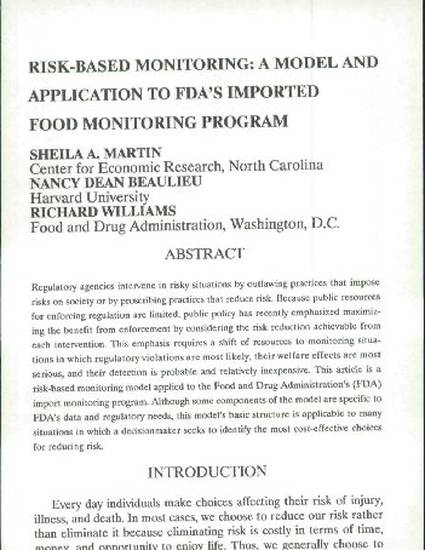
- Economics -- Methodology,
- Food law and legislation
Regulatory agencies intervene in risky situations by outlawing practices that impose risks on society or by proscribing practices that reduce risk. Because public resources for enforcing regulation are limited, public policy has recently emphasized maximizing the benefit from enforcement by considering the risk reduction achievable from each intervention. This emphasis requires a shift of resources to monitoring situations in which regulatory violations are most likely, their welfare effects are most serious, and their detection is probable and relatively inexpensive. This article is a risk-based monitoring model applied to the Food and Drug Administration's (FDA) import monitoring program. Although some components of the model are specific to FDA's data and regulatory needs, this model's basic structure is applicable to many situations in which a decisionmaker seeks to identify the most cost-effective choices for reducing risk.

This is the publisher's final PDF. Originally published in Public Administration Quarterly.
*At the time of publication Shelia Martin was affiliated with Center for Economic Research, North Carolina.